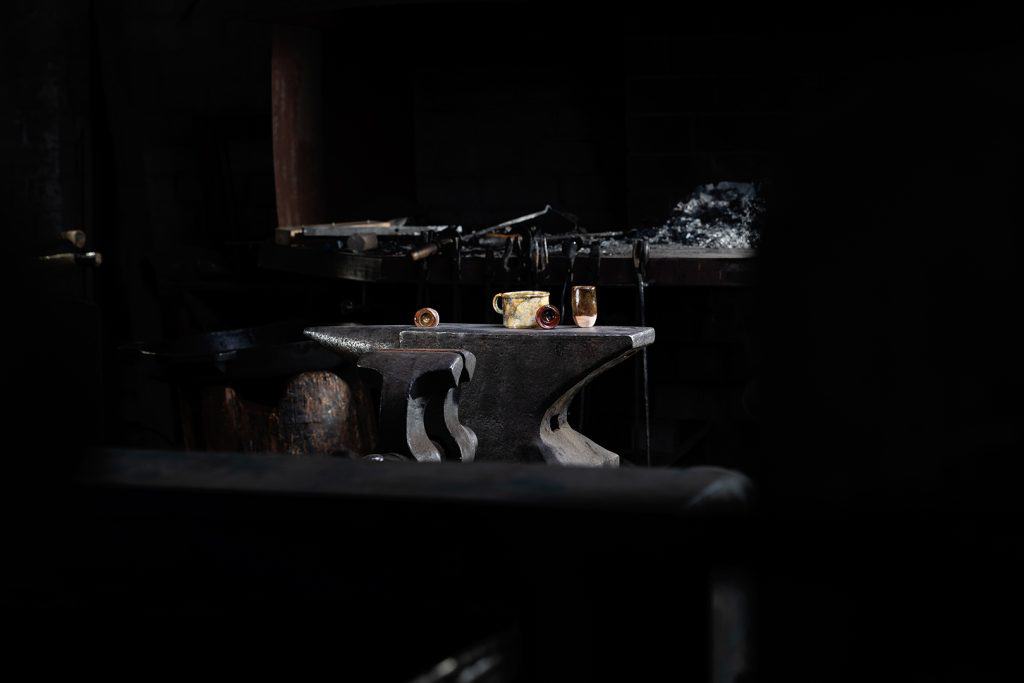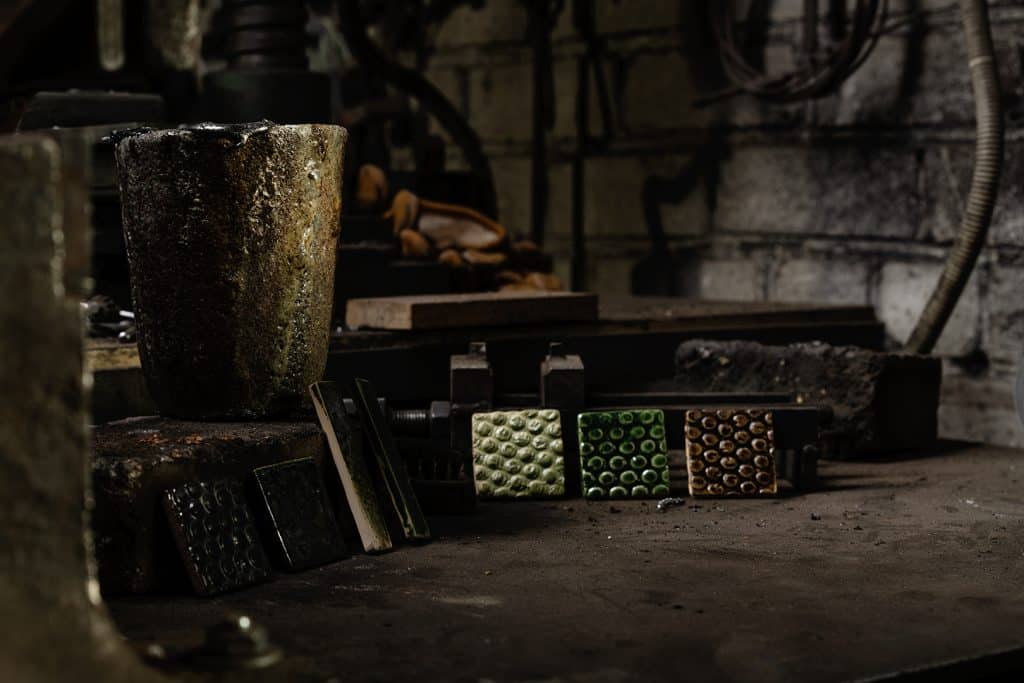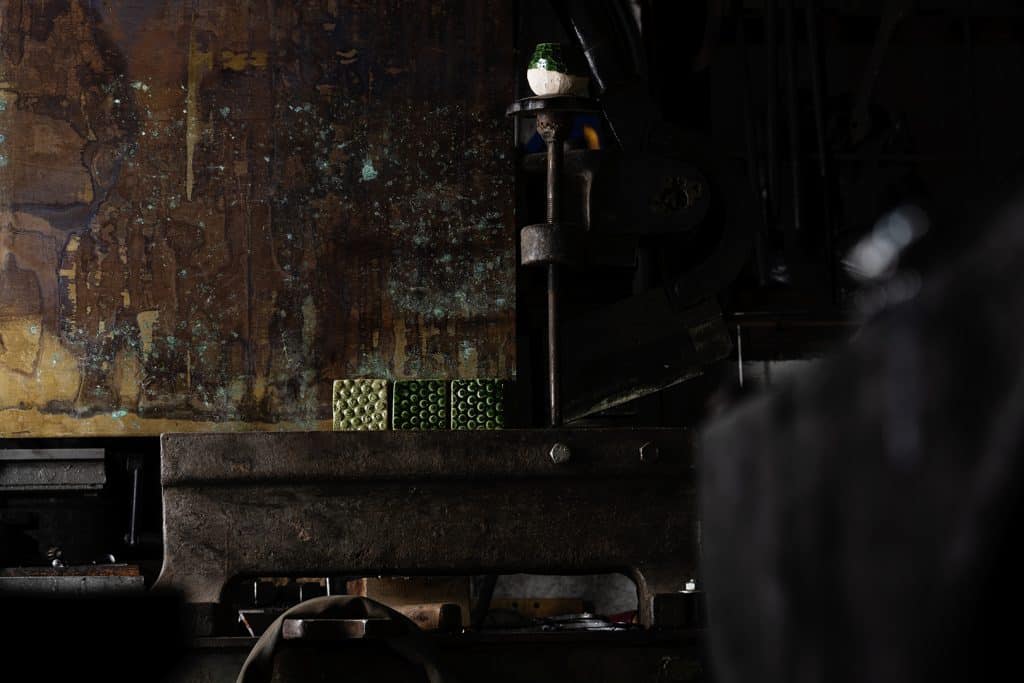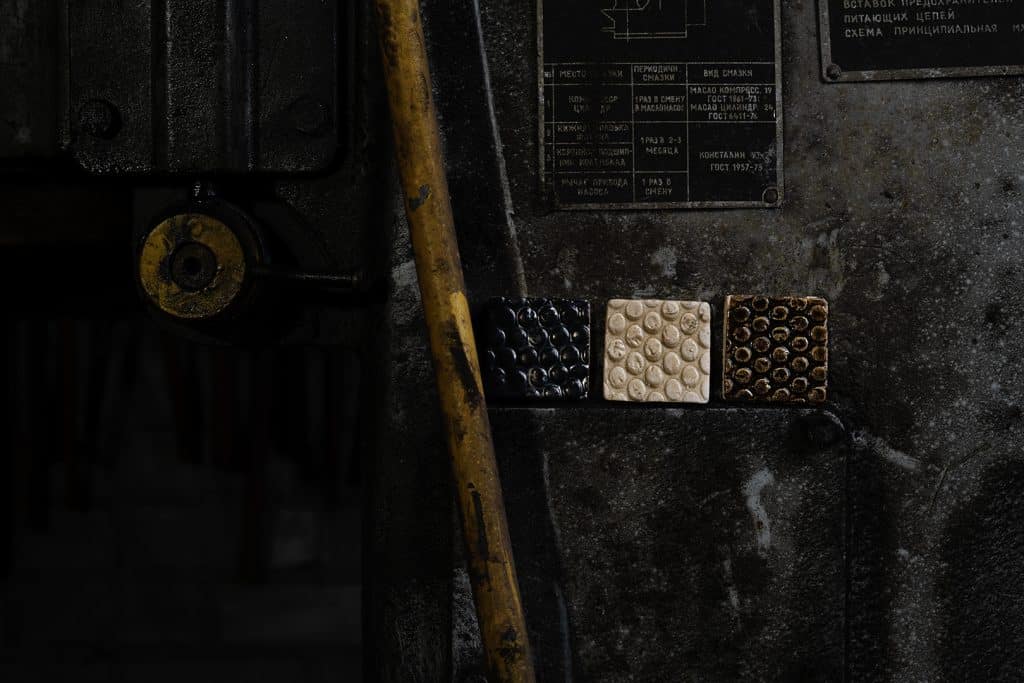Airidas Skublickas started his research career in metal art and jewellery studies, then obtained a Master of Applied Arts degree at the Telšiai faculty of the Vilnius Academy of Arts. He is currently participating in local and international exhibitions, and his project Cinivitro took part in the Dutch Design Week last year.
The Cinivitro project develops sustainable protective and decorative coatings for glass – glaze for ceramics and enamel for metals – and creates a reliable and durable product from waste glass and the by-products of a cogeneration plant (slag and bottom ash) in an interdisciplinary way.
According to the designer, the decision to join the team was due to certain circumstances. After joining the Cinivitro team at the beginning of the project, Airidas provided support in the technical testing of the materials, the experiments, and the application of the research methodology. As he has been involved in different types of experimental archaeology and material science projects and activities, this experience has been useful for the R&D for the products.
Together with Airidas, the Cinivitro project is also being developed by fellow researchers Igoris Skripka and Lukas Tomkus, who have the same, if not more, research experience, which has accompanied the current project so far. Cinivitro aims to take an interdisciplinary approach to the repurposing of secondary products and waste and their practical application in production and creativity. The project’s core values are interdisciplinarity, curiosity and initiative.

The public is invited to help solve an identified problem

Airidas says: “As researchers, we aim to take an interdisciplinary approach to the transformation of secondary products or waste, and their practical application in production or creativity. We also want to involve the general public in contributing to solving the same problem, taking the initiative and tackling the problem as it arises, not when it becomes unmanageable.
”The problem that Cinivitro is studying is clear: there is a surplus of cogeneration plant by-products (slag) in Lithuania, the use of which is currently rather niche or small-scale. In order to address this dilemma, the project is working with specialists from different fields to find wider applications for slag and ways to use or improve slag-based products.
The project doesn’t contain huge innovations but simply takes a pragmatic and objective view of the product developed, its production and use. In a review of projects of a similar nature, the most prominent drawbacks were: an inefficient production process, excessive energy consumption in production or the use of products, and the unreliable technical or aesthetic qualities of products. These are relevant and perfectly understandable problems that Cinivitro also faces. According to Airidas, “If we didn’t address these problems, our project would be developing a concept, not a product.” Nevertheless, the team and theprofessionals are optimistic about the Cinivitro project and look forward to achieving the goal of finalising the product and launching it on the market.

Academy acting as a bridge to make an idea a product
“With the help of the VDA Entrepreneurship Programme, our project idea has turned into a potential actual product. This journey from the starting point to the current point would have been very difficult without the VAA’s contribution. The entrepreneurial skills acquired during the programme determine whether an idea stays an idea,” the researcher says.


